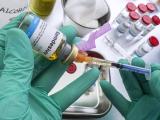In new research developments, a team from Wuhan, China, reports that even asymptomatic patients with COVID-19 pneumonia have abnormal lung findings on computed tomography (CT), and a group from Beijing noted that viral loads from infected patients appear to peak 5 to 6 days after symptom onset.
Both reports appeared yesterday in The Lancet Infectious Diseases.
Images of disease at different points
The authors of the first study described chest CT findings from 42 men and 39 women admitted to one of two hospitals in Wuhan from December 20, 2019, to January 23, 2020, with COVID-19 pneumonia. All patients (mean age, 49.5 years) had a wide range of abnormal lung changes that spread rapidly from focused areas of excess fluid in one lung to diffuse buildup in both lungs.
Patients were grouped based on the length of time between the emergence of symptoms and first CT scan: group 1 (asymptomatic patients); group 2 (scans within seven days of symptom onset); group 3 (scans 8 days to 2 weeks after symptom onset); and group 4 (scans 15 days to 3 weeks after symptom onset).
Radiologists at the two hospitals, Wuhan Jinyintan Hospital and Union Hospital of Tongji Medical College, recorded and compared the patients' clinical and laboratory findings and co-existing diseases at initial and follow-up CT scans.
Wide range of lung abnormality patterns
Different radiolographic patterns emerged at different points of the disease. The mean number of affected lung segments was 10.5: 2.8 in group 1, 11.1 in group 2, 13.0 in group 3, and 12.1 in group 4. The right lower lobe of the lung had a slight tendency toward involvement.
In asymptomatic patients, 60% had abnormalities confined to one lung, while 90% of group 2 patients had abnormalities in both lungs. Those in groups 3 and 4 showed more mixed patterns and areas where fluid had replaced the air in the lung, leading to swelling and hardening of tissues.
This study helped further characterize CT findings in the lungs of patients with COVID-19 pneumonia. With development of acute respiratory distress syndrome as few as 9 days after symptom onset, the researchers say that prompt diagnosis and treatment are paramount. "Combining assessment of imaging features with clinical and laboratory findings could facilitate early diagnosis of COVID-19 pneumonia," they wrote.
A diagnostic dilemma
In a commentary in the same journal, three radiologists from the University of Hong Kong said the varied presentations pose challenges when diagnosing COVID-19 pneumonia.
"This small number of individuals with COVID-19 pneumonia poses a diagnostic dilemma given the varied manifestations, the experts wrote.
"There is more to be learnt about this novel contagious viral pneumonia; more research is needed into the correlation of CT findings with clinical severity and progression, the predictive value of baseline CT or temporal changes for disease outcome, and the sequelae of acute lung injury induced by COVID-19," they added.
Characterizing viral load
In a letter published in the same issue, researchers from the Beijing Center for Disease Prevention and Control describe patterns of viral load in clinical samples collected from 82 patients hospitalized with COVID-19.
The researchers collected serial throat swabs, sputum, urine, and stool samples from two hospitalized patients in Beijing and examined them using quantitative real-time polymerase chain reaction (qRT-PCR). Viral loads in the throat swabs and sputum peaked about 5 or 6 days after symptom onset, with sputum showing higher loads than throat samples. No viral RNA was identified in the urine or stool samples.
They also analyzed nasal, throat, and sputum samples from 80 patients in different stages of infection. In general, the viral load soon after onset was high. Two patients under surveillance due to their exposure to patients with COVID-19 tested positive a day before symptom onset, suggesting that people with the virus can be infectious before they have symptoms.
Nine stool samples from 17 patients with confirmed COVID-19 tested positive using qRT-PCR zero to 11 days after symptom onset. "Although the viral loads were less than those of respiratory samples…precautionary measures should be considered when handling [fecal] samples," the authors wrote.



















